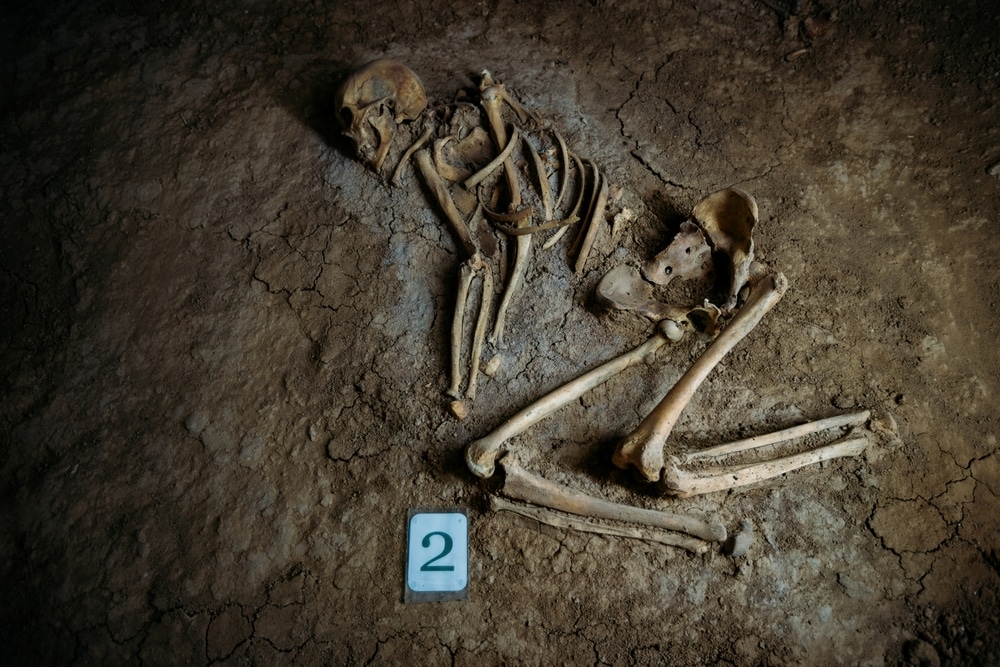Recent fossil findings at the Kromdraai location in South Africa bring revolutionary insights into ancient environments and their impact on shaping the beginnings of human existence, highlighting the interaction between hominins and various bovid species.
In the expansive grasslands of South Africa’s Cradle of Humankind, the archeological site at Kromdraai has revealed a recent finding that significantly improves our comprehension of the environments that influenced human evolution.
A group of scientists has discovered a set of fossilized bovids, showcasing the existence of previously undiscovered species that once inhabited these ancient grasslands alongside our hominin predecessors. This notable discovery, discussed in a report published in Quaternary Science Reviews, not only sheds light on the biodiversity of the Plio-Pleistocene era but also provides unprecedented views into the environmental circumstances that molded the evolution of early human species.
Among the remarkable findings is an unfamiliar medium-sized buffalo species, emphasizing the intricacies of ancient environments and the vital part these habitats played in shaping the evolutionary paths of hominins like Paranthropus robustus and early Homo species. Dr. Raphael Hanon, the main author and a Postdoctoral Researcher at the Evolutionary Studies Institute, University of Witwatersrand, mentions, “Paleontology often evokes images of dinosaurs, but examining contemporary animals like bovids is equally vital. Bovids are abundant and varied in Africa, offering insights into both past and present ecosystems. Their evolutionary journey is intertwined with ours, as they have been a significant aspect of the landscape and human communities since the Miocene, approximately 23 million years ago.”
Insights from the Plio-Pleistocene Era
Led by a cooperative team of scientists from different regions worldwide, this revelation paints a vivid depiction of a landscape dominated by vast grasslands, hinting at the intricate coexistence of life in this area during the Plio-Pleistocene era (approximately 5.3 million years ago). This research signifies a significant advancement in our pursuit to unravel the enigmas of our planet’s history, providing essential data for reconstructing the ancient environments that nurtured humanity. Raphael elaborates, “Coming across a mysteriously well-preserved skull in bovid paleontology is quite rare. Even if the specimen is not whole, uncovering and describing a possible new species of small buffalo is truly fascinating!”
These bovids, belonging to the Bovidae family which includes present-day buffalo, antelopes, and gazelles, serve as a gateway to unlocking the mysteries of yesteryear. Their variety and abundance at Kromdraai offer a peek into the diets and behaviors of both large predators and our early ancestors. As prey, these creatures influenced the hunting patterns of the region’s large animals and, consequently, impacted the survival strategies of hominins such as Paranthropus robustus and early Homo species.
Habitat Preferences and Bovid Diversity
The identification of extinct gazelle species like Gazella gracilior and the presence of an unnamed buffalo closely related to Syncerus acoelotus suggest an environment predominantly dominated by grasslands. This observation is supported by comparisons with other Plio-Pleistocene sites across South Africa, indicating that different hominin species were connected with diverse habitats.
Although Australopithecus seemed to prefer wooded and humid environments, early Homo species were situated in regions suited to arid and open conditions. The diverse array of bovids linked with Paranthropus hints at a broad range of adaptability to different environments among these hominins. Raphael describes the research process as somewhat demanding. “Reconstructing and detailing the small buffalo skull (Syncerus sp.) to identify it was one of the primary challenges,” he remarks.
“The skull was discovered in dozens of broken bone fragments, and Jean-Baptiste Fourvel and I dedicated numerous hours piecing it back together to determine its identity. Even after reassembling all the fragments, it remained quite delicate – hence challenging to handle and identify. The fossil records of African buffalo are scarce, particularly in South Africa, making it difficult to find relevant data to assist us in identifying the skull,” he adds.
The importance of these discoveries reaches further than just recognizing ancient creatures. The bovid classifications of Kromdraai, with their blend of elder Plio-Pleistocene and newer Pleistocene species, present a peek into the altering terrains of archaic Africa. These transformations, preserved in the skeletal remains and dental structures of the bovids, mirror the lively quality of our planet’s ecosystems and the adaptivity of life amidst changing climates and environments.
In addition, scrutinizing these fossils provides a time-related sign for the location, with the biochronology demonstrating that Kromdraai Unit P piled up between 2.9 and 1.8 million years ago. This stretch is critical for comprehending the timeline of human evolution in the area, delivering potential insights into the emergence of Paranthropus robustus and other notable species in southern Africa.
The Kromdraai spot endures as a confirmation of the opulence of our planet’s past, enticing scientists and fans equally to ponder the convoluted links between the earth’s history and our beginnings. Raphael is eager to prolong his scientific investigation further. “I will persist in my work on bovid paleontology and classification moving forward. I anticipate being able to carry out a more exhaustive assessment of specific species such as the buffalos or the gazelles in South Africa. Numerous paleontological and archaeological sites have relinquished a vast reserve of bovid fossil matter that simply awaits being examined,” he articulates.
Image Source: Vladimir Mulder / Shutterstock






























